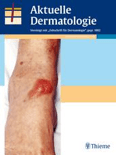
Dermatology Practical & Conceptual
Scope & Guideline
Transforming the landscape of dermatological practice and science.
Introduction
Aims and Scopes
- Dermatoscopy and Imaging Techniques:
The journal emphasizes the use of dermatoscopic and other imaging modalities (such as reflectance confocal microscopy) to improve the diagnosis and management of skin conditions, particularly melanoma and other skin cancers. - Clinical Research and Case Studies:
It publishes original research articles and case studies that provide insights into clinical practices, treatment outcomes, and the epidemiology of various dermatological diseases, focusing on real-world applications. - Interdisciplinary Approaches and Innovations:
The journal encourages interdisciplinary research that incorporates dermatology with other fields such as immunology, oncology, and public health, highlighting innovative therapies and emerging treatments. - Focus on Skin of Color:
A significant scope of the journal is dedicated to the unique dermatological concerns and presentations in diverse populations, particularly in patients with skin of color, addressing disparities in access to care and outcomes. - Patient-Centric Research:
The journal prioritizes studies that assess the psychosocial impacts of skin diseases, quality of life, and patient satisfaction, aiming to improve dermatological care through patient feedback.
Trending and Emerging
- Teledermatology and Digital Health:
The rise of teledermatology, particularly in the context of the COVID-19 pandemic, emphasizes the need for remote consultation methods and digital health solutions, reflecting a significant shift in how dermatological care is delivered. - Biologics and Targeted Therapies:
There is a growing focus on the efficacy and safety of biologic agents and targeted therapies for chronic skin conditions, such as psoriasis and atopic dermatitis, highlighting advancements in treatment options. - Psychosocial Impact of Skin Diseases:
Research exploring the psychosocial implications of skin conditions, including quality of life and mental health, is increasingly prevalent, indicating a recognition of the holistic impact of dermatological diseases. - Diversity and Inclusion in Dermatology:
Emerging studies focus on the dermatological health of diverse populations, particularly skin of color, addressing gaps in research and care disparities that have historically been overlooked. - Artificial Intelligence and Machine Learning:
The integration of AI and machine learning in dermatoscopy and skin cancer detection is gaining traction, indicating a move towards innovative diagnostic tools that enhance clinical decision-making.
Declining or Waning
- Traditional Histopathology:
There is a noticeable decline in studies focusing solely on traditional histopathological findings without integrating advanced imaging techniques. This may indicate a shift towards more holistic and technology-driven approaches to diagnosis. - Basic Science Research:
Research articles centered on basic science or laboratory studies without direct clinical implications are becoming less prominent, as the emphasis moves towards clinical applicability and patient-centered outcomes. - General Dermatology Topics:
Publications covering broad dermatological topics without a specific focus on innovative techniques or treatments are less frequent, suggesting a trend towards more specialized and targeted research. - Single-Center Studies:
There is a decrease in the number of single-center studies, as larger, multicenter collaborations are becoming more common, reflecting a desire for broader data applicability and validation. - Non-Clinical Surveys:
Surveys that do not have a direct clinical application or relevance to patient outcomes are being published less frequently, indicating a preference for research that demonstrates tangible benefits in dermatological practice.
Similar Journals

Dermatology Research and Practice
Pioneering studies that transform dermatological practice.Dermatology Research and Practice is a premier open access journal published by HINDAWI LTD, dedicated to advancing the field of dermatology since its establishment in 2009. With a respectable impact factor and a ranking of #42 out of 142 in the Scopus Medicine - Dermatology category, the journal stands in the 70th percentile, reflecting its influence and relevance in contemporary dermatological research. Based in Egypt, it provides a platform for groundbreaking studies that shape clinical practice and policy worldwide. The journal covers a wide range of topics within dermatology, including but not limited to clinical research, epidemiology, and patient care, making it an essential resource for researchers, healthcare professionals, and students seeking to enhance their understanding and contribute to the field. Emphasizing open access, Dermatology Research and Practice ensures that vital research findings are readily available to the global community, fostering collaboration and innovation in dermatology.

JOURNAL OF DERMATOLOGICAL TREATMENT
Innovating treatments, transforming lives.The JOURNAL OF DERMATOLOGICAL TREATMENT, published by TAYLOR & FRANCIS LTD, is a premier forum dedicated to advancing the field of dermatology through the dissemination of high-quality research. Since its inception in 1989, this journal has maintained a significant impact on the dermatological community, currently ranking in the top quartile (Q1) of the Dermatology category with an impressive Scopus ranking of #14 out of 142 journals, reflecting its reputation among peers and its contribution to the clinical and academic landscape. The journal shifted to Open Access in 2023, enhancing the accessibility of groundbreaking findings to researchers, clinicians, and students worldwide. With a commitment to publishing diverse articles, from innovative treatment modalities to comprehensive reviews, the JOURNAL OF DERMATOLOGICAL TREATMENT serves as an invaluable resource for professionals seeking to stay at the forefront of dermatological science in a rapidly evolving field.

INDIAN JOURNAL OF DERMATOLOGY
Pioneering insights into skin health and disease.INDIAN JOURNAL OF DERMATOLOGY, published by Wolters Kluwer Medknow Publications, is a renowned open-access journal that has been a significant platform for disseminating vital research in the field of dermatology since its inception in 1962. With an ISSN of 0019-5154 and an E-ISSN of 1998-3611, the journal covers a comprehensive array of topics relevant to skin health and diseases, serving both academic and clinical audiences in India and beyond. Having transitioned to an open access model in 2005, it strives to enhance the reach and impact of dermatological research. The journal is classified in the Q3 quartile within the dermatology category as of 2023 and ranks 82 out of 142 in Scopus, showcasing its contribution to the field despite competitive rankings. By fostering scholarly communication and providing a rigorous peer-review process, the INDIAN JOURNAL OF DERMATOLOGY remains a vital resource for researchers, practitioners, and students devoted to advancing the understanding and treatment of skin disorders.

Turkderm-Turkish Archives of Dermatology and Venerology
Connecting Professionals Through Open Access ResearchTurkderm - Turkish Archives of Dermatology and Venerology, published by GALENOS PUBL HOUSE, serves as a vital platform for the dissemination of innovative research and advancements in the fields of dermatology and venerology. With an Open Access policy implemented since 2002, this journal aims to provide free and unrestricted access to significant findings, ensuring that vital information reaches a global audience. Based in Turkey, the journal has positioned itself as an important resource for professionals, researchers, and students alike, despite currently being categorized in Q4 of both Dermatology and Infectious Diseases as per the 2023 metrics. Although it faces competition in the rankings, with a Scopus standing of #131 in Dermatology and #331 in Infectious Diseases, its dedication to advancing knowledge in these critical health areas is unwavering. The journal continually invites original research, reviews, and case studies that enhance clinical practices and foster understanding in the dermatological community.

AKTUELLE DERMATOLOGIE
Advancing Dermatological Knowledge for Tomorrow's CareAKTUELLE DERMATOLOGIE is a distinguished journal in the field of Dermatology, published by GEORG THIEME VERLAG KG in Germany. With a commitment to advancing knowledge and practice in dermatological science, the journal has regularly featured research articles, reviews, and case studies since its inception in 1975 and continues to publish contributions through 2024. Despite being categorized in the lower quartile (Q4) of dermatology journals and holding a Scopus rank of #127 out of 142, it plays a pivotal role in disseminating valuable insights that support ongoing education and research in the discipline. The journal provides an essential platform for both seasoned professionals and budding researchers to share their findings, explore emerging trends, and discuss clinical practices, all while serving the needs of an evolving medical landscape. Access to its content may be restricted, but the journal remains a crucial reference for those invested in the future of dermatological research and patient care.

JOURNAL DER DEUTSCHEN DERMATOLOGISCHEN GESELLSCHAFT
Elevating the standard of dermatological research and practice.JOURNAL DER DEUTSCHEN DERMATOLOGISCHEN GESELLSCHAFT, published by Wiley, is a prominent periodical in the field of dermatology, recognized by its Q2 quartile ranking in the 2023 dermatology category. With a dedicated focus on advancing knowledge in dermatological science, the journal publishes rigorous peer-reviewed research that encompasses a range of topics including clinical studies, research methodologies, and innovative treatment practices in dermatology. Its impact is reflected in its Scopus ranking, where it stands at #48 out of 142 in the medicine dermatology category, placing it in the top 66th percentile. Although not an Open Access journal, it serves as a critical resource for researchers, clinicians, and students alike, facilitating the dissemination of high-quality research findings and fostering a deeper understanding of dermatological conditions and treatments. With years of convergence from 2003 to 2024, this journal remains a vital platform for scholarly dialogue and discovery in dermatology.

Journal of the Dermatology Nurses Association
Transforming Dermatology Nursing Through KnowledgeWelcome to the Journal of the Dermatology Nurses Association, an esteemed publication dedicated to advancing the field of dermatology nursing. Published by Lippincott Williams & Wilkins, this journal serves as a vital resource for nurses, researchers, and healthcare professionals interested in the latest developments in skin health, patient care, and innovative practices within dermatology. With a focus on evidence-based research and the dissemination of critical knowledge, the journal is committed to addressing the unique challenges faced by dermatology nurses. Though currently categorized in the Q4 quartile for Advanced and Specialized Nursing, it aims to enhance its impact and relevance in the ever-evolving healthcare landscape. Although not available as an open-access journal, the Journal of the Dermatology Nurses Association provides valuable insights and peer-reviewed articles that enrich the education and practice of its audience from its base in the United States. Join us in exploring the intersection of nursing and dermatology through cutting-edge research and collaborative discussions, driving forward the standards of patient care and nursing excellence.

SKIN PHARMACOLOGY AND PHYSIOLOGY
Innovating Dermatological Research for a Healthier TomorrowSKIN PHARMACOLOGY AND PHYSIOLOGY is a leading peer-reviewed journal published by KARGER, based in Switzerland, that focuses on the intricate interplay between skin pharmacology and physiology. With its ISSN 1660-5527 and E-ISSN 1660-5535, the journal spans a rich history of publication since 1988, presenting groundbreaking research and discoveries in the fields of dermatology, pharmacology, and physiology. As evidenced by its 2023 quartile rankings, which include Q2 in Dermatology and Q2 in Medicine (miscellaneous), this journal is highly regarded, ranking in the 83rd percentile for dermatology in Scopus, reflecting its significant impact on the scientific community. Researchers, professionals, and students alike will find valuable insights in this publication, which aims to disseminate knowledge and foster innovations that enhance the understanding of skin-related health. The open access policies provide wider accessibility to relevant findings and developments, making it an essential resource for anyone dedicated to advancing the field.

Acta Dermatovenerologica Alpina Pannonica et Adriatica
Bridging Gaps in Dermatology and Infectious DiseasesActa Dermatovenerologica Alpina Pannonica et Adriatica, published by the Dermatovenereological Society of Slovenia, stands as an important peer-reviewed journal in the fields of dermatology, infectious diseases, and general medicine. Established in 1994, this journal has built a solid reputation over the years, achieving a Q3 ranking in 2023 within its respective categories, which highlights its contribution and relevance in the academic community. With an ISSN of 1318-4458 and E-ISSN of 1581-2979, it aims to disseminate new research findings, review articles, and case reports that impact clinical practice and promote knowledge in dermatovenereology throughout the Alpine and Adriatic regions. Located in Ljubljana, Slovenia, the journal actively supports open access to its publications, ensuring that valuable insights are available to a global audience, which is crucial for advancing medical research and practice. The dedication to quality and scientific rigor makes Acta Dermatovenerologica Alpina Pannonica et Adriatica a must-read for researchers, practitioners, and students aiming to stay informed on the latest advancements in dermatology and related disciplines.

Annals of Dermatology
Advancing skin science for a healthier tomorrow.Annals of Dermatology is a prestigious academic journal published by the Korean Dermatological Association, focusing on the latest research and advancements in the field of dermatology. With a commitment to advancing knowledge in skin health and disease, this journal serves as a vital resource for researchers, clinicians, and students working in dermatology and related disciplines. Since its inception in 1989, it has evolved to consolidate its position in the academic community, boasting a Q2 ranking in the 2023 Dermatology category and a Scopus rank of #87 out of 142, placing it in the 39th percentile. Although it operates under a subscription model, the journal's impact factor reflects its significance in advancing dermatological research, attracting innovative studies and reviews that shape clinical practice. With a publication history extending from 1989 to 1996 and then from 2008 to the present, Annals of Dermatology continues to be an essential publication for those devoted to improving skin health.